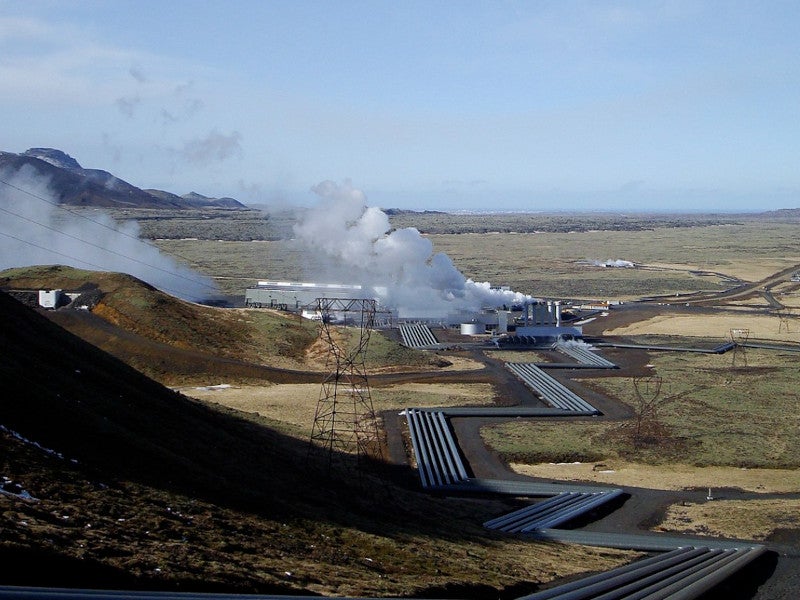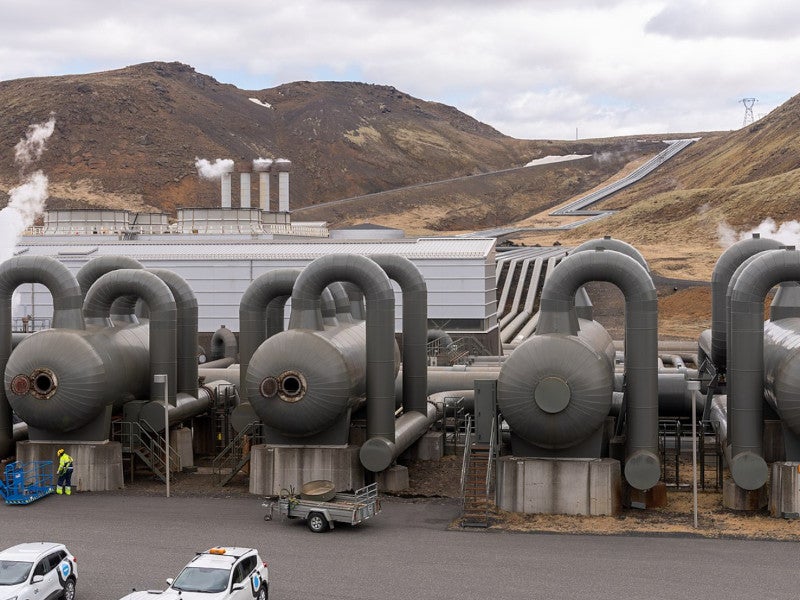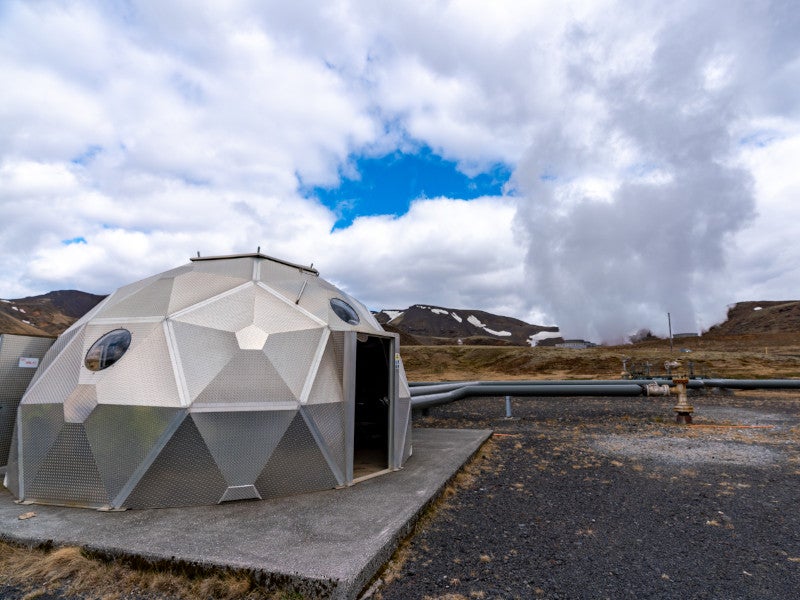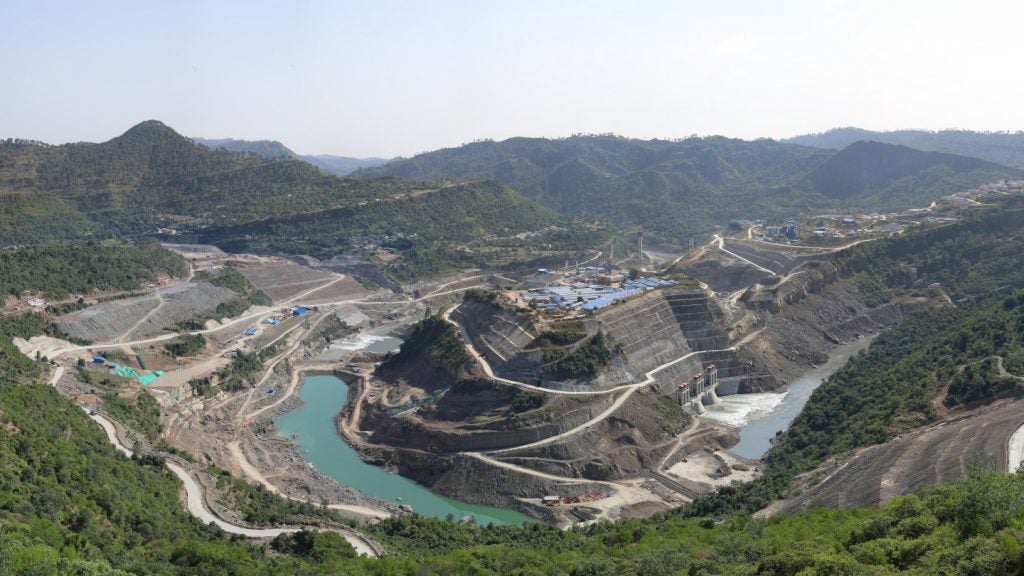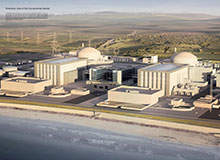Iceland’s Hellisheidi geothermal power plant is one of the world’s ten biggest geothermal power plants. It is a flash steam combined heat and power (CHP) plant that generates 303MW of electricity and 400MW of thermal energy.
The plant is located at Hengill, approximately 11km away from the existing Nesjavellir geothermal power station in southwest Iceland.
The plant was commissioned in five phases, from 2006 to 2011 and is owned and operated by Orkuveita Reykjavíkur. The Hellisheidi geothermal power plant is scheduled to achieve 133MWth by 2030.
The plant’s power output is primarily supplied to the aluminium refineries in the capital city of Reykjavik, which is located 20km west of Hellisheidi.
A major carbon capture and storage (CCS) project, Orca, began operating at the Hellisheidi geothermal power plant site in September 2021. Claimed to be the world’s biggest direct air CCS plant, Orca utilises geothermal energy generated by the Hellisheidi facility to perform CCS operations.
Hellisheidi power plant development
Orkuveita Reykjavikur decided to build the geothermal power plant in 2002, based on the conclusions of research drilling that was completed in 2001. The first phase of the project included the installation of two high-pressure 45MW turbines and commenced production in 2006. A low-pressure steam turbine of 33MW capacity was added to the plant in 2007 as part of the second phase of development.
The third phase, commissioned in 2008, involved the installation of two more high-pressure turbines of 45MW capacity each. Steam from Skarðsmýrarfjall Mountain is used for the power generation of the third phase.
The geothermal plant started producing hot water in its fourth phase of development, which was completed in 2010. A hot water main pipeline for district heating purposes was also installed in this phase.
The fifth stage comprised the installation of two 45MW turbines in 2011. As part of the sixth stage expansion, four production wells were connected in 2015.
The plant was further expanded to 200MWth in 2018 as part of phase seven. Another 133MWth expansion (phase eight) is scheduled for 2030.
Hellisheidi power plant makeup
The Hellisheidi geothermal power plant was developed in an area of 13,000m² (139,930.8ft²) near Mount Hengill in the Hengill geothermal area, one of the largest high-temperature geothermal fields in Iceland, which covers an area of 110km². Power is generated using a combination of six high-pressure turbines and one low-pressure steam turbine.
Hot fluid is extracted from 44 production wells, ranging from 1,000m to 2,200m. A total of 17 reinjection wells were also drilled. The extracted fluid passes through steam and mist separators. The separated hot steam propels the turbines for electricity generation. The plant uses about 500kg/s of geothermal steam at 180°C to produce electricity.
The electrical system of each generating unit of the power station comprises a 50MVA generator, 50MVA/220kV step-up transformer and 11/11 kV transformer for connection to the 11kV station service system.
The generated power is transmitted to a national grid substation located 1km away from the power plant.
Hellisheidi hot water production and supply
Fresh groundwater is heated to 50°C using the steam from the turbines. The water is heated again by heat exchange up to 83°C.
The reheated water is pumped to a 950m³ capacity hot water storage tank at the plant site through a 1m-wide and 360m-long pipe. The hot water is further supplied to the city of Reykjavík through a 19.5km-long pre-insulated underground pipeline with a diameter of 0.9m to 1m.
Construction of the Hellisheidi hot water main pipeline started in 2008. The pipeline was brought into service towards the end of 2010 and has a maximum flow rate of 2,250l/s.
Hellisheidi cold water production and supply
Three 500kW submersible pumps are installed, along with power transformers and 11kV switchgear. Each pump has a capacity of 160l/s with a depth of 120m.
Cold water is extracted from a depth of 120m and directed into heat exchangers, where it is warmed to temperatures between 83°C and 93°C as required. The system currently has a combined capacity of 303MWe and 200MWth.
The drainage pipes underwent a few modifications to comply with water protection regulations. As the expansion was originally planned during the construction of the first phase, the plant’s structure was not required to be expanded.
Contractors and suppliers involved in the Hellisheidi power project
The Hellisheidi power plant design and construction contract was awarded to Mannvit Engineering.
Verkís Engineering was awarded the design and construction contract for the Hellisheidi hot water main pipeline.
Mitsubishi supplied six 45MW high-pressure steam turbines while Toshiba provided one 33MW low-pressure steam turbine for the power plant.
The counter-flow wet used at the power plant was supplied by SPX Cooling Technologies. Siemens supplied a control and protection system for the power plant.
Orca CCS plant details
The Orca CCS facility, located adjacent to the Hellisheidi geothermal power plant, captures carbon dioxide (CO₂) directly from the air and stores it permanently as rocks in the earth’s crust.
The Orca carbon capture plant was developed and is operated by Climeworks, a direct air CO₂ capture technology company based in Switzerland.
Icelandic company Carbfix is responsible for mixing the air-captured CO₂ with water and pumping it deep underground for natural mineralisation and permanent storage in the form of rocks.
Construction works on the Orca project started in May 2020 and the CCS facility commenced operations in September 2021.
The carbon capture plant uses a modular system and is made up of eight stackable CO₂ collector units, each of which can capture 500t of CO₂ a year.

